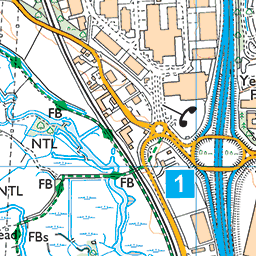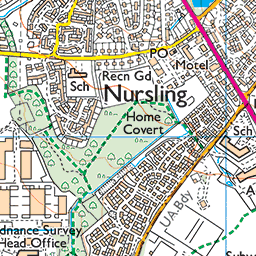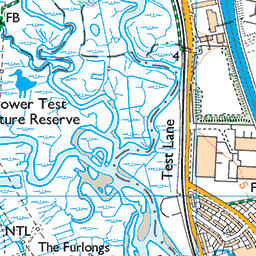Cotswold Way Map and Information
See the trail map and find answers to the most common questions about the Trail below
With over 102 miles (164km) of magical walking, magnificent views, ancient sites and beautiful villages, the Cotswold Way offers a taste of the South you won’t forget. The route offers a quintessentially English experience through flower-filled meadows, wonderful beech woodland, charming towns and villages and past historic sites – with amazing views from the Cotswold escarpment.
Use the Map Filter to see places to visit and where to stay along the Cotswold Way. View information on the map by ticking the boxes in the Map Filter.
Added to your Itinerary Planner below
Distance calculator
Customise your trip with our filters.

Toggle between the options below to show available markers.
General info Equestrian Info Cycling InfoAccommodation
Points of interest
Services
Routes
Accommodation
Points of interest
Transport
Accommodation
Points of interest
Transport


















The custom route elevation is created when you use the distance calculator (above) to draw a line.

Using the GPX downloads
Please be aware that the “full” GPX file available to download above, may contain multiple tracks and some apps and websites may not be able to display this correctly.
Select the blue arrow tabs below for more details.
The Trail is 102 mile (164 km) long. The official guidebook suggests a seven to ten day trip. You might want to take a little longer if you want to see more of the interesting places along the way.
Anyone who is reasonably fit can walk the Cotswold Way although many walkers are surprised at the frequency of steep climbs. The route is very well way-marked so finding your way is easy. However, it is always a good idea to take a guidebook or map.
If you wish to find out more take a look at the Cotswold Way Hall of Fame where others who have walked the Trail have recorded their experience.
There are several places suitable for those with restricted mobility, and even an off road mobility scooter for hire to explore the Cotswold Way around Crickley Hill Country Park, through Countryside Mobility.
For most of its length it follows the Cotswold escarpment giving wonderful views of the surrounding landscape.
You can walk the route from Chipping Campden to Bath (which a lot of guide books are written for), or from Bath to Chipping Campden, the route is signposted well in both directions.
A description of the route broken down into 15 sections can be viewed here.
The following diversions are currently in place along the trail:
Many walkers have enjoyed completing the Cotswold Way with their canine companions.
Just bear in mind the trail is not stile free and does pass over farm land that will have livestock (including sheep, cows and horses) freely grazing, nature reserves and sites of special scientific interest. Some holiday accommodation, even campsites, may not allow pets so do check beforehand.
We do ask that you watch the film below and follow the Canine Code to strike a balance between getting out and about with your dog and giving wildlife and wild places space to thrive. This has been produced in partnership with Gloucestershire Wildlife Trust, Cotswolds National Landscape and The National Trust.
Dog poo can introduce extra nutrients and unwanted chemicals from medication into the soil, making it harder for wildflowers to flourish by encouraging nettles and thistles.
It can also pose a threat to grazing livestock – dog poo contains bacteria that can cause disease in people and animals, as well as spoiling others’ enjoyment of these wild places.
Always pick up after your dog, even if there are no dog bins provided. Where there are no dog bins provided, please pick up and take it home with you.
Keep your dog on a lead unless otherwise advised and note where landowners may request you to not take your four-legged companion.
Even fields/common land where there may not be grazing livestock may not be suitable to having dogs running off leads due to the delicate nature of the habitat – this could be due to ground-nesting birds, rare plants or insects, grazing animals or other reasons.
Do not let your dog approach or chase wildlife, including birds, squirrels, rabbits and deer, as it can cause stress and exhaustion.
Cows and horses can be very protective of their young, and sadly pregnant ewes and other livestock can abort during pregnancy from the stress of being chased or worried by dogs.
When letting your dog off the lead in safe areas, be certain they will come back when called and that they don’t roam too far – sticking to the paths as much as possible means wildlife isn’t disturbed and you can keep a closer eye on them.
Other people may not be as comfortable around canines, and dogs of any size can cause serious fright and anxiety.
Dogs can knock people over when they get excited, which can be especially dangerous or frightening to those who are elderly or to small children.
Other people may not be as comfortable around canines, and dogs of any size can cause serious fright and anxiety.
Dogs can knock people over when they get excited, which can be especially dangerous or frightening to those who are elderly or to small children.
The land management teams want your visit to these wild places to be as safe and get as much enjoyment from your visit as possible, while making sure that livestock and wildlife is given the space it needs. Please follow their instructions and guidance at all times.
Some dogs love the water, and we’d love to find a balance between them having fun and caring for nature. If your dog is a swimmer, please read the information below.
Yes there are lots of Geocaches around the Cotswolds, and there are a number along the Cotswold Way.
Geocaching is a type of global treasure hunt of people looking for caches, or hidden stashes of objects. Geocaching may also be described as a series of hide-and-seek games, where hiders provide online clues for seekers. Seekers use global positioning system (GPS) devices to find hidden caches.
Work continues to make the trails accessible to more people.
Our Access for all page brings together access information about the National Trails including easy access walks and sources of further information.
The closest airports to the Cotswold Way are at Birmingham and Bristol. All airports offer excellent public transport links.
Moreton-in-Marsh is the nearest main line train station to the start of the trail at Chipping Campden. For rail information please see www.nationalrail.co.uk
There are many local bus services linking main towns close to the Cotswold Way.
You can find up-to-date public transport information including a journey planner at www.traveline.info
The Cotswold Way has excellent road links to the M4, M5 and M40, providing easy access to and from London, Birmingham and the national motorway network.
There are plenty of campsites along the Trail and they can be viewed on the Interactive Map, or you can download and print a list of accommodation for each section of the Trail.
If you plan to camp please note in England and Wales, there are normally no rights for national trail users to wild camp along the way – so seeking the landowner’s permission is recommended.
There are several companies that will arrange to move your bags for you, help you plan your trip, or arrange a full package.
View a list of these companies here: Walking Holidays & Baggage Transfers.
The Cotswold Way can be walked right through the year so there is not really a best time. However, if you’re looking for clear views from the escarpment, then winter may be for you; whereas late spring / early summer are the best times to see the woodland and grasslands in all their glory.
Many guide books is written from north to south but there is no right or wrong way – plenty of people enjoy walking it in the other direction.
Certainly the views walking North to South can be more striking in that direction, but in some parts the South to North views can be just as inspiring (some people do return to rewalk the opposite way).
There are a couple of guide books that do cover the trail in both directions
If you are planning to use public transport to get to the start and finish of the Trail you may wish to start in Chipping Campden and end in Bath where there are more transport options.
We recommend that you take a map and/or guidebook with you, or a copy of the walk leaflet if you are doing a shorter walk. You may also find a compass useful.
If you are walking solo you may want to tell somewhere where you are going as there can be mobile black spots along the Trail. Ensure your phone is fully charged before setting off.
Weather in the UK can be changeable so it’s wise to be prepared. You’ll need good footwear, waterproofs and warm layers. Take plenty of water and just in case, pack a few plasters for your feet. In the summer you may need sun cream.
Phone reception can be patchy along the Trail, don’t rely on being able to use your phone to help you navigate. Wi-Fi is available at some accommodation and pubs/cafés along the route.
The UK is unique in having a network of paths that the public can use, this is the Public Rights of Way network. You can see these paths on Ordnance Survey maps.
National Trails are signed with an acorn symbol and/or the Trail name which you will see on stiles, gates and signposts. This is the symbol used by all the English and Welsh National Trails.
As you are walking along the Trail you will also see waymarkers pointing to other paths. You can use the public rights of way network to leave the Trail to explore places of interest, reach your accommodation and find places to eat and drink.
You will often find a coloured arrow on signs which indicates the status of that section of path. The most common are yellow arrows which are footpaths and blue which are bridleways.
A GPX file can be downloaded from the Create Your Own Trip page (the button is below the map).
Apart from road crossings, only about 8% of the Cotswold Way is on roads, and they are predominantly quiet roads with a safe walking refuge.
For the most part, you will be on quiet footpaths through beautiful fields and woodland areas.
Most of the Cotswold Way is on footpaths, only 19% of the 102 miles are on tracks/bridleways, so the Cotswold Way is not a cycling route.
April & May are good times to see wild blue bells and wild garlic in the woodland and sheltered edges of hedgerows, but does depend on weather etc. Incredibly one of the hills we have in the Cotswolds, along the Cotswold Way (Coaley Peak) is carpeted in blue bells over the grassed hillside itself. But you will also come across them through some of the woods you pass through.
You will also find the trees are starting to awaken (certainly May onwards) so splendid fresh green, and the grass too, along with hedgerows with displays of white blackthorn blossoms, and then hawthorn blossoms (white and pink – this thought to be where the saying ” Ne’er cast a clout till May is out” comes from (i.e. don’t cast off your winter clothing until May be out, which is signified by the blooming of the Hawthorn bushes).
This is also the time when the picturesque gardens of some of the large houses and gardens operated by the National Trust, such as Hidcote, come alive with tulips and other spring flowering plants and shrubs.
Additionally there is the wonderful colour changes of our fields throughout the growing and harvesting seasons, from fresh lush green shoots, to golden ripening crops.
Autumn brings with it wonderful changes in the colour of our hedgerows (with their berries) and trees before they shed their leaves, Mid-to-late-October is the best time to see autumn leaves in the UK.
Woodland trust have a useful calendar that gives an idea of what you may come across at different times of the year https://naturescalendar.woodlandtrust.org.uk/media/1817/10103-natures-calendar-date-range-poster.pdf
There is a good choice of accommodation close to the Trail and it can be viewed on the Interactive Map above or on the Create Your Own Trip page.
Download and print a list of accommodation for each section of the Trail.
The area is popular and accommodation can book up quickly in peak season so we recommend that you book it well in advance.
Long-distance walking or riding is a real adventure, but it can be tricky knowing where to start with arranging accommodation and for your bags to be carried. You can plan it all yourself of course, but there are lots of companies that can help. Some offer self-guided packages, others provide a guide to lead you on the walk. Many will tailor-make a package to suit you.
View our Holiday Guides and Baggage Transfer Companies page.
Enjoy magical walking with long distance views from the Cotswold escarpment on a journey through picturesque villages, stunning woodlands, pretty pastoral scenery and past famous ancient sites, ending in the World Heritage City of Bath. Explore the Cotswold Way for three days, a week or even longer. You can find inspiration for your walking adventure using our suggested itineraries, or select one of the bookable itineraries which are provided by walking tour operatives.
Visit our Walking Holidays Page for holiday inspiration for the Cotswold Way.



The Cotswold Way Hall of Fame is a scheme to recognize the achievements of walkers that complete the Cotswold Way National Trail and to encourage others to consider undertaking one of the nation’s finest walks.
Hall of Fame membership is free and open to those that walk the trail in one journey or complete it in stages, as well as those who have walked it in the past.
Becoming a member is simple, click on the link below to record your achievement.
And dont forget to Purchase a Badge, Patch or other memento* to celebrate your achievement.
*Cotswold National Landscape work in partnership with the Cotswold Way Association to look after the Cotswold Way. If you would simply like to donate towards the upkeep of the trail, please do so via the Cotswold Way Association website.
We no longer require a card to be completed to become a member of the Hall of Fame, as with the digital world we live in getting cards stamped made it difficult to continue that way.
Some guide books may still reference the old card system.
The Cotswold Way Companion: an insider guide offers both eBook and paperback editions. The book will help you to get the most out of walking the Cotswold Way. It’s special for two reasons: it focuses on the Cotswold Way’s natural environment and its archaeology and history; and it’s the work of people with great knowledge and experience of the trail: members of the Cotswold Way Association (CWA), the charity set up in 2016 to promote its conservation and protection, and Cotswold Voluntary Wardens who patrol the trail and lead walks on it.
Proceeds from the Cotswold Companion, which is available as an eBook and paperback, will go towards the trail’s upkeep and improvement. Buy both and you will get one year’s membership of the Cotswold Way Association to help keep making a difference.
Browse through this Book PREVIEW to find out about the book’s contents, along with the types of improvement projects the book’s proceeds will be spent on. To purchase visit the Cotswold Way Association online shop.
Audio Guides – a series of Audio Guides based on The Companion’s ten stage chapters.
Each guide is just under 4,000 words in total and, like the book’s chapters, broken down into bite-sized sections taking just a few minutes to listen to. To confirm the excellent sound quality, to hear the final section of the Stage 10 guide on Chipping Campden listen here for Audio sample. For more information visit the Cotswold Way Association website.
Other guidebooks and maps for the Trail are available from the The Trails Shop along with a wide range of gifts and other merchandise.
Many guides describe the route from North to South, if you are looking for a guide book that covers the route South to North then the following provide coverage for both directions
You can find a list of Ordnance Survey maps for the Trail here: Cotswold Way Maps for the Trail.
The Cotswold Way National Trail has both an enamel badge (for walkers and runners) and iron on material patch (walkers) available for a small donation. These are available from the Cotswold Way Association who work in partnership with Cotswolds National Landscape to look after the trail. All monies raised go towards the ongoing maintenance of the Trail.

You can also record your achievement for free in the Cotswold Way Hall of Fame.
Record your entry here: Hall of Fame Entry Form.
New for 2023 these are available from the Cotswold Way Association who work in partnership with Cotswolds National Landscape to look after the trail. All monies raised go towards the ongoing maintenance of the Trail.



Yes you can purchase a Waymarker sign through the Cotswold Way Association online shop

Certificates are available from the The Trails Shop.
Feeling inspired? Build a bespoke itinerary and start planning your visit to this great National Trail here.
If you have feedback or a question about the Cotswold Way, please contact the Trail Manager.

The listing you have clicked on is located on or close to more than one trail. Please select the trail you are interested in below to view the listing.
%buttons%